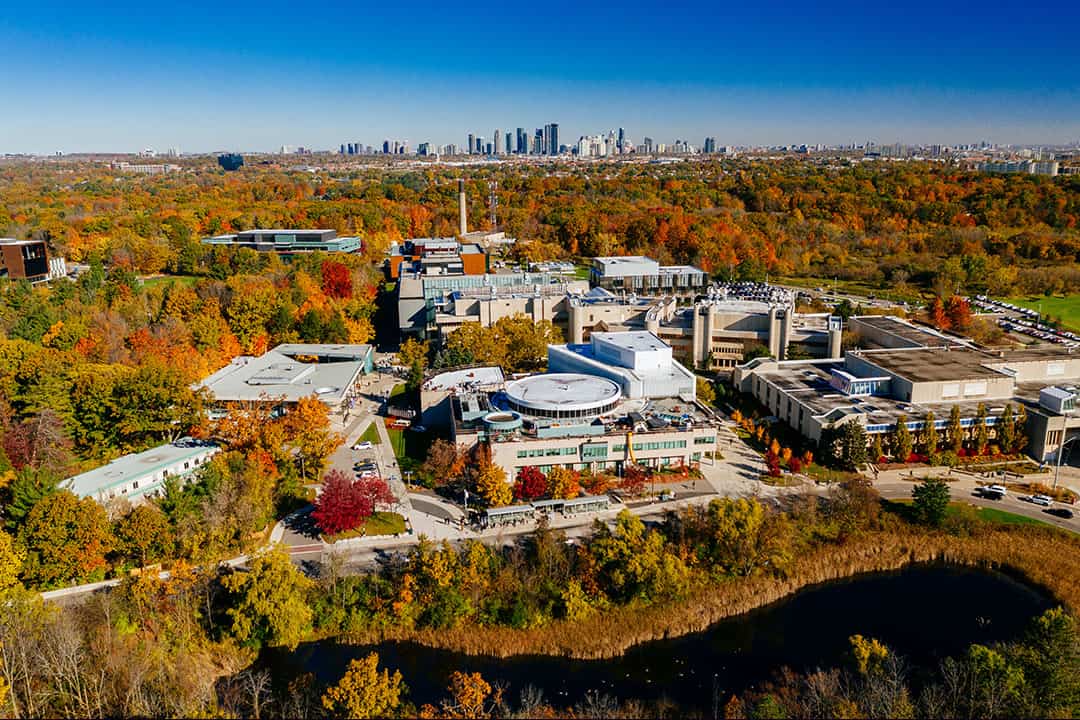UTM is currently working on the UTM Campus Master Plan 2020, a series of guidelines and goals for the campus space. UTM devises a new master plan around once every 10 years — having released its previous plan in 2011 — and the plan focuses on buildings and the use of space on campus.
The plan will be used to inform future campus projects and seeks to incorporate a range of initiatives, such as strengthening the preservation and use of campus open spaces, focusing on environmental sustainability, and improving safety and user mobility in and around campus.
The current phase of the plan involves identifying what changes to the draft are needed and collecting feedback from community members. This phase, which runs from September to December, includes having campus and Indigenous consultation sessions, and a first presentation to a design review committee.
The UTM Campus Master Plan 2020 is expected to be in its final stage during the first four months of 2021. This phase will include remaining stakeholder meetings, a third campus consultation, and a second presentation to the design review committee.
More space for students, research
The Varsity spoke with Saher Fazilat, Chief Administrative Officer at UTM, to discuss the plan and its current phase.
Fazilat said that the current phase involves consultations with the internal community at UTM. The internal consultations began and were intended to take place in person, but due to the pandemic, consultations continued online.
“We couldn’t figure out, in April [and] May, how to best engage the students,” Fazilat said, but the consultants eventually found the Bang the Table online engagement tool, through which they could solicit feedback from students, faculty, and staff members.
“It would be a fruitless plan without engaging the community, so we had to find new ways,” Fazilat said. She noted how the internal consultation phase was extended as well, since students in September were “just coming back, catching up, and trying to get used to the new environment.”
Fazilat also said that the UTM Campus Master Plan 2020 is in its draft form and is “likely to change a lot after [UTM gets] the full feedback from the internal committee.”
According to Fazilat, the plan aims to enhance infrastructure for students and community members who are already at UTM.
“We want to add space so that students have more study space,” Fazilat said. “We want to shift away from just hallway seating. We want to give [students] dedicated space.”
The plan involves ensuring that spaces work well for the UTM community, such as by ensuring pedestrian-friendly roads so that “cars and people can live together.” Additionally, the plan is meant to inform where growth of infrastructure will take place and how initiatives — such as reducing greenhouse gas emissions, preserving UTM’s green space, and deciding on building locations — will be implemented.
After internal consultations are drafted, consultations with the external community will take place regarding central objectives of the plan, including sustainability and Indigenous place making.
Indigenous consultation on the master plan
Tee Duke, Assistant Director Indigenous Initiatives at UTM, wrote to The Varsity with her thoughts regarding the UTM Campus Master Plan 2020 and UTM’s efforts to consult with Indigenous community members. Duke highlighted the central identity of UTM’s natural setting on the Credit River, noting that “Indigenous perspectives are pivotal in the phases leading to this updated Campus Master Plan.”
The Indigenous Perspectives Survey is available online for Indigenous community members to “share insights on ways to enhance the campus experience for Indigenous Peoples through place making and other initiatives at UTM.”
“These initiatives may also build greater awareness amongst the non-Indigenous community of Indigenous histories, cultures, and Treaties,” Duke wrote. Duke also mentioned that the architect team from the Brook McIlroy firm, which is working with UTM on its master plan, has “an Indigenous Design Studio led by Indigenous team members.”
Duke wrote that there is always more that can be done with regard to forming connections with Indigenous communities and highlighted the importance of non-Indigenous UTM community members to “reflect on how they see themselves in relationship building as well.”
“Ultimately it is on all of us as a campus community to continue to do the work by seeking out and maintaining reciprocal relationships with each other,” she wrote.
Duke expressed gratitude to the “Indigenous colleagues, faculty, students, external community members and allies that continue to help achieve more Indigenous-focused place making at UTM.”


